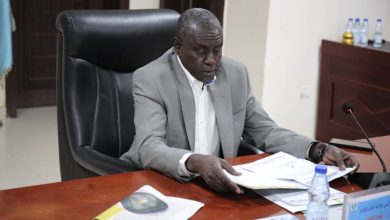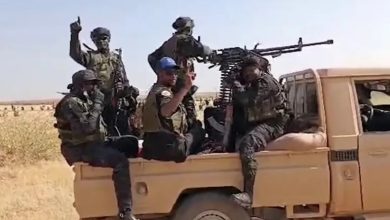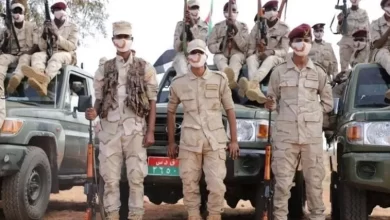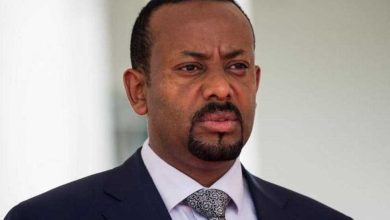The Border Triangle Between Libya, Sudan, and Egypt: Geography Melded in the Crucible of War

Sudan Events – Agencies
On a scorching morning in June 2025, the border triangle at the meeting point of Sudan, Egypt, and Libya appeared as calm as ever. Yet beneath this calm, a smoldering conflict was on the brink of ignition.
On that day, a unit from the Salafi “Sabil al-Salam Battalion,” affiliated with retired General Khalifa Haftar, clashed with Sudanese forces from the “Joint Force,” supported by elements of the Sudanese army. A video later circulated showing a leader of the Rapid Support Forces (RSF) ordering his troops to withdraw from Egyptian territory, stating emphatically, “This is not our land.”
The clash was not an isolated incident or a field mistake; rather, it was a clear indication of the overlapping geographical and military fault lines between Sudan, Egypt, and Libya—and a sign that the conflict was spilling over into a broader regional arena.
Sudan’s borders, once lines drawn on maps, have become an open zone where armed groups, smuggling networks, and militias allied with foreign powers operate freely.
In response to the clash, the Sudanese army issued a statement accusing Haftar’s forces of direct involvement in an RSF-led attack on Sudanese military positions. It also announced a strategic withdrawal from the border triangle as part of what it described as arrangements to repel aggression.
This latest escalation cannot be understood without retracing the pathways of Libyan-Sudanese entanglement—particularly since war erupted in April 2023 between the Sudanese army and the RSF. The border, especially around Libya’s Kufra region, has long been an informal corridor for weapons and fighters.
As the conflict intensified, southern Libya became a logistical hub for arms smuggling and mercenary recruitment.
Fezzan: A Strategic Transportation Nexus
Southern Libya is a strategic crossroads connecting North Africa with the sub-Saharan region. The Fezzan area is one of North Africa’s most fragile in terms of security, with overlapping smuggling networks and transnational armed groups. Gold, weapons, and human trafficking form the triangle of illicit commerce fueling these networks.
Following the collapse of the Gaddafi regime in 2011, southern Libya descended into chaos, with conflict centering around control of smuggling routes and urban centers—then expanding to oil resources and fuel distribution. The discovery of significant gold deposits in a belt stretching from northern Darfur to Mauritania (via Libya and Niger) from 2011 to 2014 further stoked the flames.
The region is also part of global drug trafficking routes. According to a 2018 report by the Small Arms Survey, cocaine is trafficked from South America to West Africa, then through southern Libya, Chad, and Niger, before reaching Algeria or Egypt—and then Europe or the Middle East.
The prevailing model in southern Libya is one of de facto control. In that environment, the Salafi “Sabil al-Salam Battalion” was established in Kufra in 2015 by local fighters from the Zway tribe, led by Abdulrahman Hashim after returning from medical treatment in Egypt. The battalion adopted the Madkhalist Salafi ideology, known for strict loyalty to rulers and rejection of revolutions.
This ideology gave the battalion religious legitimacy to act in the name of restoring security and combating chaos. It soon began coordinating with Haftar’s forces to secure border crossings, guard gold mining operations, and curb fuel smuggling—while also fighting Sudanese and Chadian opposition groups hostile to Haftar and based in southern Libya.
After failing to seize Tripoli in a major 2019 offensive, Haftar realized consolidating power in the south might grant him maneuverability lacking elsewhere in the Libyan conflict. He moved steadily toward Sabha, Ubari, and Kufra, aiming to secure a rear corridor linking him with Chad, Niger, and Sudan.
Haftar’s expansion in the south relied on a blend of tribal alliances and deals with local militias.
As a result, the south became not just a geographic periphery, but a strategic platform for recycling instability to support Haftar’s ambition—whether to lead Libya or maintain influence as a regional actor in Sahel security dynamics.
Sudan: Fragility Invites Interference
Haftar views Sudan not merely as a neighbor but as a vulnerable zone ripe for exploitation. Since the outbreak of war between the Sudanese army and the RSF, Haftar saw an opportunity to deepen his involvement—positioning himself along the conflict’s fringes and offering logistical support to the RSF, largely through the Sabil al-Salam Battalion.
The RSF has used the route between Al-Awaynat and Kufra as a military supply line and a corridor for smuggling fuel and weapons, giving Sabil al-Salam a regional role that transcends Libya’s borders.
The Kufra–Darfur road is also vital for transporting gold from Darfur and Kordofan to outside markets, linking the RSF’s economic interests with Haftar’s strategic aims—and making Libya’s involvement in Sudan both military and commercial.
Meanwhile, Europe’s role in southern Libya cannot be ignored. Under former Sudanese President Omar al-Bashir, the EU supported “Operation Khartoum”—a security initiative aimed at curbing irregular migration from the Horn of Africa, channeling tens of millions of euros to Khartoum.
These policies, however, empowered militias, allowing local actors to act under the pretext of migration control while using funds to entrench cross-border alliances and bolster armed influence.
Notably, in early 2025, Haftar’s forces reactivated the Ma’tan as-Sarra airbase in Libya’s far southeast—strategically located near the tri-border area with Sudan and Chad.
Satellite imagery showed the transfer of heavy equipment and Russian cargo aircraft to the base, alongside renovations by Russian technical teams.
Reports from MENA Defense and The Africa Report indicate the base has become a forward logistics hub linking Kufra to the Sudanese border, used to support covert RSF operations with ammunition and fuel.
Sabil al-Salam Battalion secures the base perimeter and conducts patrols in the surrounding desert, making it a key node in Haftar’s southern influence network. Thus, the once-abandoned base now supports RSF operations in Sudan as an air logistics hub.
The Sudanese Army Statement
In its June 2025 statement, the Sudanese army used unusually sharp language, accusing Haftar’s forces of “direct intervention” and describing the assault as a “flagrant violation of international law” and part of an “international and regional conspiracy” against Sudan.
This wasn’t a casual accusation—it was a veiled admission that the battlefield now extends beyond Sudanese borders. The timing of the escalation also coincided with battlefield setbacks for the RSF in Khartoum and Kordofan.
The army’s shift toward direct accusations of military interference from Haftar marks a turning point. Previously content to issue warnings about border infiltration, the army now speaks openly of “direct intervention” and “conspiracies,” signaling deep concern in a volatile moment.
Haftar’s camp responded quickly via a statement from the Libyan National Army (LNA), denying involvement and claiming its patrols had been repeatedly attacked by Sudanese forces while securing Libya’s borders.
Ahmed Saad Abu Nakheila, commander of the Sabil al-Salam Battalion, claimed his forces—under LNA Ground Forces Command—had crushed a joint Sudanese force made up of the Justice and Equality Movement (led by Sudan’s Finance Minister Jibril Ibrahim) and the Sudan Liberation Movement (led by Darfur governor Minni Minnawi). These groups, once rebel movements, are now part of the Sudanese army-aligned “Joint Force.”
Haftar’s response offered a calculated denial. While not admitting to intervention, it justified the clash as “border defense,” leaving the door open to continued operations via local proxies without formal acknowledgment. Abu Nakheila, in turn, framed the conflict as a transnational campaign against rebel movements—not a direct confrontation with the Sudanese state.
Between Egypt’s Concerns and Haftar’s Calculations
These developments reveal the complex calculus behind Haftar’s strategy toward Sudan. On one hand, he invokes the need to secure Libya’s southern border against weapons smuggling and militant infiltration—a narrative that resonates in some Western capitals.
On the other hand, he uses these security concerns as a cover to expand his geopolitical influence, especially along the border zones with Chad and Sudan.
Given that the RSF has previously served as a source of gold and arms for Haftar, its collapse without a stable alternative poses a risk to his local equilibrium.
Haftar’s involvement in Sudan cannot be viewed in isolation from his intricate web of regional alliances. While Egypt supports the Sudanese army to safeguard its southern border, other regional players back groups that offer access to gold, weapons, and control over Sudanese resources.
Egypt, for its part, prioritizes the stability of its southern frontier. The prospect of clashes between the Sudanese army and RSF elements supported by Libyan forces near the Al-Awaynat triangle raises alarms in Cairo about a potential cross-border security breakdown. Any strengthening of the RSF near Egypt’s border is viewed as a direct threat.
Haftar’s backing of the RSF puts Egypt in a precarious position: it values Haftar as a stabilizing force in eastern Libya, yet cannot tolerate actions that jeopardize border equilibrium.
Cairo is likely to adopt a public stance emphasizing “restraint” and “respect for Sudanese sovereignty,” while intensifying covert military and intelligence operations to prevent a recurrence—and possibly pressuring Haftar through intermediaries to freeze direct RSF support in this sensitive region.
Source: Al Jazeera Net



